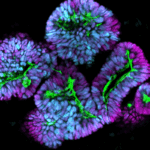Studies Show Anxiety Disorders May Be Caused By Exposure To Narcissistic Abuse

Anxiety is more than just a fleeting emotion; it often stems from deeper, unresolved pain. For many, it’s the silent aftermath of toxic relationships marked by manipulation and emotional harm. Narcissistic abuse, though often overlooked, leaves lasting scars on the mind and heart, trapping individuals in cycles of fear, self-doubt, and emotional exhaustion.
Every year, millions of people wrestle with anxiety, unaware of its roots in past emotional trauma. Relationships with narcissistic individuals—whether a partner, parent, or close friend—can strip away one’s sense of security and self-worth. This form of abuse not only fosters anxiety and depression but also distorts reality, making it difficult to break free.
Yet healing is within reach. By understanding the effects of narcissistic abuse and recognizing its signs, it is possible to rebuild and rediscover peace. This journey is one of empowerment, where each step forward leads to a life rooted in self-respect, resilience, and genuine connection. Let this be the beginning of your path to freedom.
Understanding Narcissistic Abuse and Its Ripple Effects
Narcissistic abuse often goes unnoticed because it can be subtle at first. It may begin with charming words and actions, creating a false sense of security. Over time, this facade fades, and manipulation, gaslighting, and emotional control take its place. The abuser prioritizes their own needs and desires, often at the expense of the victim’s mental and emotional well-being.
This form of abuse can leave a person feeling unworthy, confused, and trapped in self-doubt. The constant criticism, conditional affection, and emotional exploitation create a distorted sense of reality, where nothing ever feels quite right. Narcissistic abuse is not just about what happens in the moment—it leaves lasting imprints on how victims perceive themselves and their relationships. However, recognizing these dynamics is a powerful first step toward regaining clarity and peace.
How Narcissistic Abuse Shapes Mental and Physical Health
The effects of narcissistic abuse extend far beyond the emotional realm. Anxiety, depression, and post-traumatic stress disorder (PTSD) are common among survivors, as the constant manipulation and control erode self-esteem over time. This emotional toll can make even the simplest decisions feel overwhelming, creating a cycle of fear and self-doubt.
The impact isn’t limited to the mind. Emotional trauma often manifests physically, leading to issues such as disrupted sleep, chronic headaches, and muscle tension. In some cases, unhealthy coping mechanisms, like substance use or overeating, may develop as a way to numb the pain. These responses are not signs of weakness but rather indicators of the body and mind reacting to prolonged stress.
Despite the heavy toll, healing is possible. Acknowledging the abuse and its effects is the first step toward recovery. The journey may take time, but with the right tools and support, it is possible to rebuild a sense of self and create a future defined by resilience and inner strength.
Narcissistic Abuse in Childhood vs. Adulthood
 Image source: Shutterstock
Image source: Shutterstock
Childhood should be a time of safety and nurturing, but for those raised by narcissistic parents or caregivers, it can feel anything but. Narcissistic parents often view their children not as individuals but as extensions of themselves. This distorted dynamic creates impossible expectations, conditional love, and emotional manipulation that profoundly shape a child’s sense of self.
A child raised in such an environment may grow up feeling inadequate, constantly striving for approval that never comes. The effects of this upbringing don’t stay confined to childhood. They follow the individual into adulthood, often manifesting as low self-esteem, difficulty trusting others, and an anxious or avoidant attachment style in relationships. The long-term impact is not just emotional but also developmental, affecting the way they interact with the world and build connections.
The Cycle of Narcissistic Abuse in Adult Relationships
In adulthood, narcissistic abuse often plays out in romantic relationships, friendships, or even professional settings. Abusers may use charm and affection as tools to gain control, only to withdraw support and impose emotional manipulation once dependency is established. Victims often find themselves questioning their decisions, suppressing their needs, and becoming isolated from their support networks.
This cycle of harm leaves a lasting mark. It fosters patterns of self-doubt, fear of abandonment, and a tendency to accept unhealthy dynamics as normal. Many victims find themselves repeating these patterns in future relationships, unable to break free from the learned behaviors instilled by past abuse. Recognizing these signs is essential to breaking the cycle and reclaiming control.
While the root cause of narcissistic abuse in childhood and adulthood is the same—manipulation for control—the pathways of recovery can differ. Childhood abuse often requires addressing deeply ingrained beliefs and attachment styles that developed over years. In contrast, abuse in adulthood may involve disentangling from toxic relationships and rebuilding confidence in real-time. Understanding the differences between these experiences can help survivors find the specific support and healing they need.
 Image source: Shutterstock
Image source: Shutterstock
Recognizing the Signs of Narcissistic Abuse
Narcissistic abuse often works its way into a person’s life without them even realizing it. It’s not always loud or obvious. Sometimes it’s subtle—a backhanded comment here, an unreasonable demand there. Over time, these moments pile up, creating a pattern of control and emotional harm that can leave someone feeling completely unmoored.
There’s no single way narcissistic abuse looks, but some signs are more common than others. Think about these behaviors and how they might show up:
- Gaslighting: Have you ever felt like your reality was being rewritten? That’s what gaslighting does—it makes you question your own thoughts and memories, leaving you unsure of what’s true.
- Conditional Love: Love and approval are dangled like a carrot, only given when you do exactly what’s expected. It’s exhausting, and it chips away at self-worth.
- Isolation: Suddenly, friends and family feel distant. The abuser might intentionally pull you away from your support system to keep control.
- Blame Games: Everything wrong somehow becomes your fault. It doesn’t matter if it’s something completely unrelated—you end up carrying the guilt.
- Constant Criticism: Over time, a steady stream of negative comments can wear down even the strongest confidence. You might start to believe you’re not good enough, even though that’s far from the truth.
Why It’s So Hard to Recognize
One of the hardest parts of narcissistic abuse is seeing it for what it is. Narcissists have a way of twisting reality, making you doubt yourself at every turn. You might even feel guilty for thinking something’s wrong—after all, they often come across as charming or even loving in public. But that’s just the mask they wear.
Abuse doesn’t always look the way people expect. Sometimes it’s subtle, wrapped in moments of affection or apologies that make you second-guess your feelings. This emotional tug-of-war keeps victims stuck, unsure of whether to stay or leave. It’s not weakness—it’s a survival response to manipulation.
Recognizing these patterns is the first step toward regaining clarity. Once the fog lifts, it becomes easier to see the truth: no one deserves to live in a constant state of fear or doubt. Awareness creates a foundation for change and healing, one step at a time.
Breaking Free and Reclaiming Your Life
 Image source: Shutterstock
Image source: Shutterstock
Healing from narcissistic abuse isn’t easy, but it’s a journey worth taking. Each step forward helps release the hold of the past and makes space for strength, clarity, and peace.
- Seek Professional Help: Therapy provides a safe environment to process trauma and rebuild confidence. A skilled professional can help survivors untangle the emotional knots left behind by abuse and develop healthier coping mechanisms.
- Set Boundaries: Establishing clear limits with the abuser—or cutting ties entirely—protects emotional well-being. Boundaries are essential for reclaiming personal power and preventing further harm. They’re not about shutting others out but about prioritizing self-respect.
- Reconnect with Yourself: Abuse can make a person lose sight of who they are. Practices like mindfulness, journaling, and spending time on hobbies can help rediscover personal identity and joy. These small, intentional actions rebuild a sense of self that was overshadowed by the abuser’s control.
- Build a Support System: Recovery is easier with the right people by your side. Connecting with supportive friends, family, or even survivor groups provides strength and validation. Knowing others understand your journey can ease feelings of isolation and offer encouragement.
- Forgive Yourself: Letting go of self-blame is one of the most freeing steps in recovery. The abuse was never the victim’s fault, and forgiveness is a way to move forward without the weight of shame. It’s about self-compassion and allowing space for growth.
Healing is not linear, and setbacks may happen, but progress is always possible. Each small step builds a stronger, more resilient future.
Healing and Thriving After Narcissistic Abuse
Healing from narcissistic abuse is a journey of finding yourself again—a chance to step out of the darkness and into the warmth of self-love and freedom. The scars left behind might feel heavy, but they don’t have to define the rest of the story. Instead, they can become proof of your resilience, reminders that even through the hardest times, growth is possible.
Moving forward means taking it one day at a time, no matter how slow it feels. It’s about asking for help when you need it, setting boundaries to protect your peace, and finding small ways to care for yourself. It’s also about changing the narrative—seeing yourself not as someone broken but as someone who’s rebuilding stronger than ever.
The journey won’t always be smooth, but every step forward, no matter how small, gets you closer to the freedom and joy you deserve. The power to heal has always been inside you, waiting for the moment you decide to claim it. Now is that moment. Step into your future with hope, courage, and the belief that a brighter life is waiting.
Featured image source: Shutterstock
Loading...






